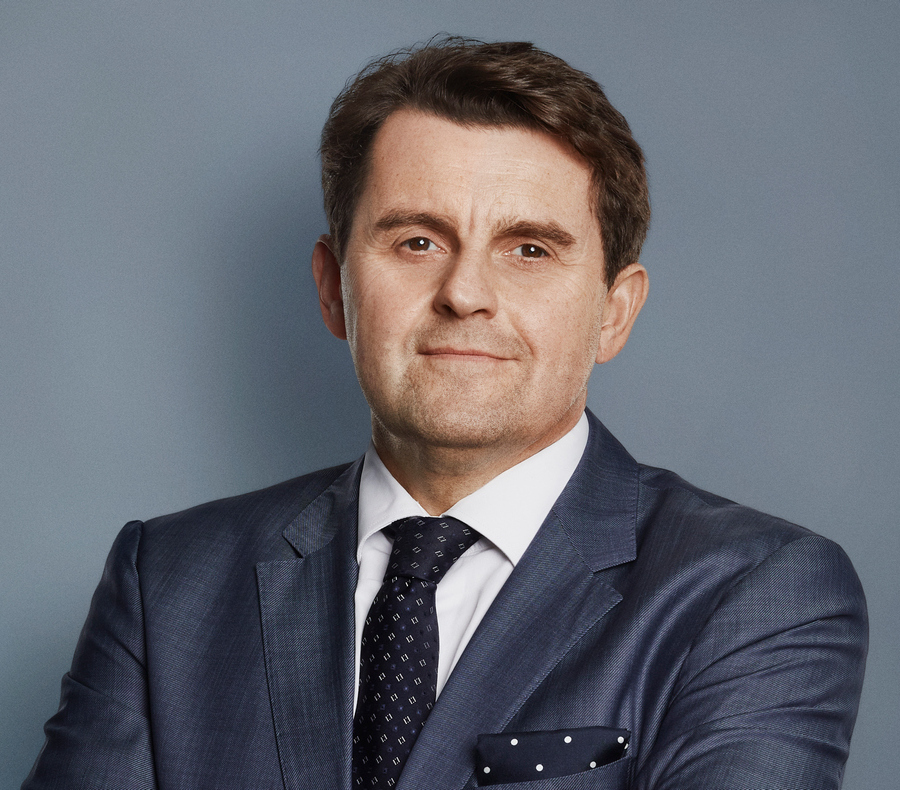“We started the year with a strong operational base and were able to benefit from our high-quality portfolio expansion. The Covid-19 crisis slowed this growth beginning in mid-March, but we are working steadily to master these challenges. By now, 79% of our retail space has already reopened. We want to emerge from this crisis even stronger and continue IMMOFINANZ‘s growth course, whereby our focus will remain on the office and retail asset classes and on our brand strategy“, indicated Ronny Pecik, CEO of IMMOFINANZ.
FFO 1 from the standing investment business (before tax) improved by 3.6% to EUR 29.1 million (Q1 2019: EUR 28.1 million). This indicator includes, for the first time, the annual coupon for the corporate bond 2023, which totalled EUR 13.1 million and was paid in January 2020. FFO 1 per share improved to EUR 0.29 (Q1 2019: EUR 0.26). If the coupon payment were spread over the full year, FFO 1 in Q1 2020 would equal EUR 38.9 million (plus 38.7% versus Q1 2019).
Occupancy rate stable at high level
The real estate portfolio included 211 properties with a combined carrying amount of approximately EUR 5.1 billion as of 31 March 2020. Most of these properties – 92.2% or EUR 4.7 billion – are standing investments. Of this total, 64.7% are attributable to the office business and 35.2% to the retail business. The occupancy rate remained nearly constant at 96.4% (31 December 2019: 96.8%). The gross return equalled 6.1% based on IFRS rental income and 6.4% based on invoiced rents.
Robust balance sheet indicators
IMMOFINANZ has a robust balance sheet structure with an equity ratio of 45.9% (31 December 2019: 46.0%). Cash and cash equivalents totalled EUR 312.5 million (31 December 2019: EUR 345.1 million). The net-loan-to-value ratio equalled 43.8% (12/2019: 43.0%) and was below the target value of roughly 45.0%. Average financing costs declined further to 1.90% per year including derivatives (31 December 2019: 1.91%). The hedging quota is stable at a high 90.8% (31 December 2019: 90.7%), and the unencumbered asset pool (investment property and S IMMO shares) amounted to EUR 1.9 billion or 33.4% (31 December 2019: EUR 1.9 billion or 33.8%).
Basic EPRA NAV per share rose to EUR 31.95 as of 31 March 2020 (31 December 2019: diluted EUR 31.05). The calculation of EPRA NAV – in contrast to 31 December 2019 – does not include any potential diluting effects from the conversion of the IMMOFINANZ convertible bond 2024 because the bond was “not in the money” as of 31 March 2020. The book value per share equalled EUR 28.69 (31 December 2019: EUR 29.34).
Covid-19 update
As previously announced, IMMOFINANZ immediately introduced numerous measures at the start of the Covid-19 crisis to minimise the potential negative effects on the Group. These measures included, among others, the postponement of non-time-critical maintenance, the reduction of operating costs and similar expenses, the reduction of scheduled principal payments on bank financing, a universal stop for all property acquisitions currently under consideration and the evaluation of tax deferrals and tax savings. The very sound liquidity position of EUR 312.5 million at the end of March was also strengthened by the conclusion of an additional unsecured credit line of EUR 100.0 million.

The legal regulations implemented to contain Covid-19 have been gradually lifted in recent weeks, beginning with mid-April in Austria, in nearly all countries where IMMOFINANZ owns retail properties. At the present time, 79% of IMMOFINANZ’s retail space has reopened. Romania represents an exception, where the four VIVO! shopping centers are still closed. “We are also making very good progress on the conclusion of agreements with our major retail tenants to develop fair solutions for the crisis months and the reopening phase. However, it is still to early to estimate the effects of the pandemic. Due to our operating performance and our solid liquidity position and financing structure, we are well positioned to handle the current challenges“, explained Dietmar Reindl, COO of IMMOFINANZ.
A clear positive development in visitor frequency, above all in the retail parks, is visible in the retail properties that have recently reopened. With approximately 3.2 million visitors per week in the STOP SHOP retail parks, the level reflects the beginning of the year. This development underscores the competitive advantage of the STOP SHOP concept: one-stop shopping with direct access from the parking area to the individual shops and reduced possibilities for contacts.





